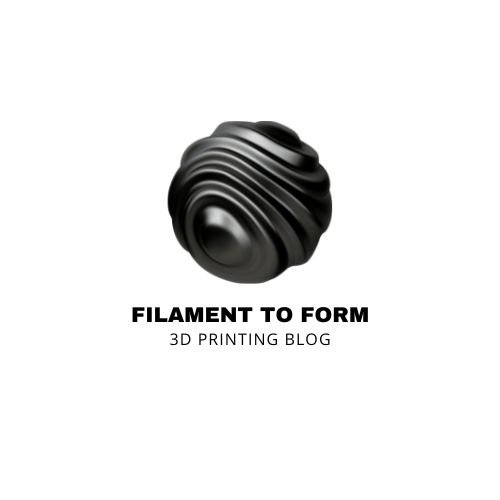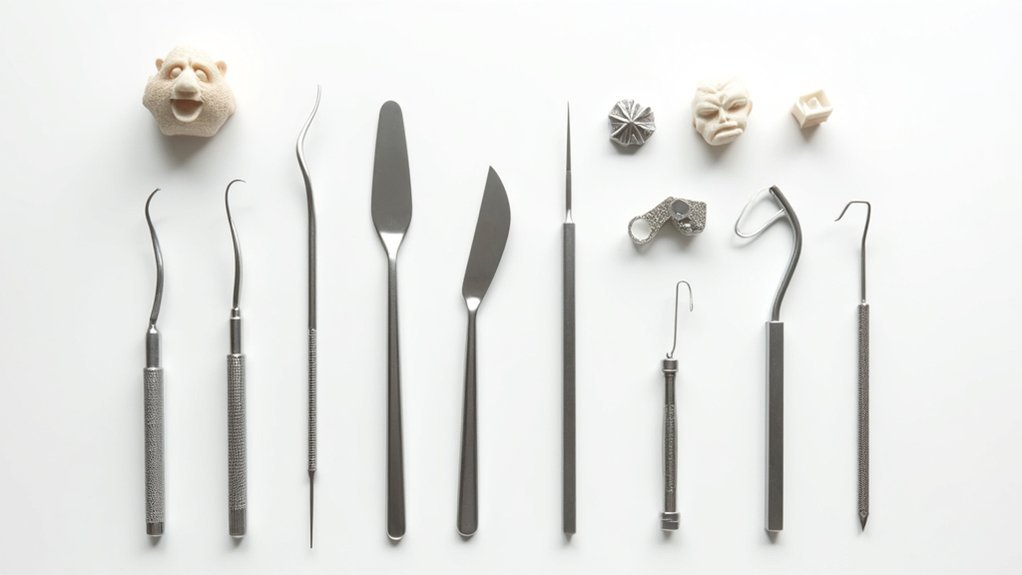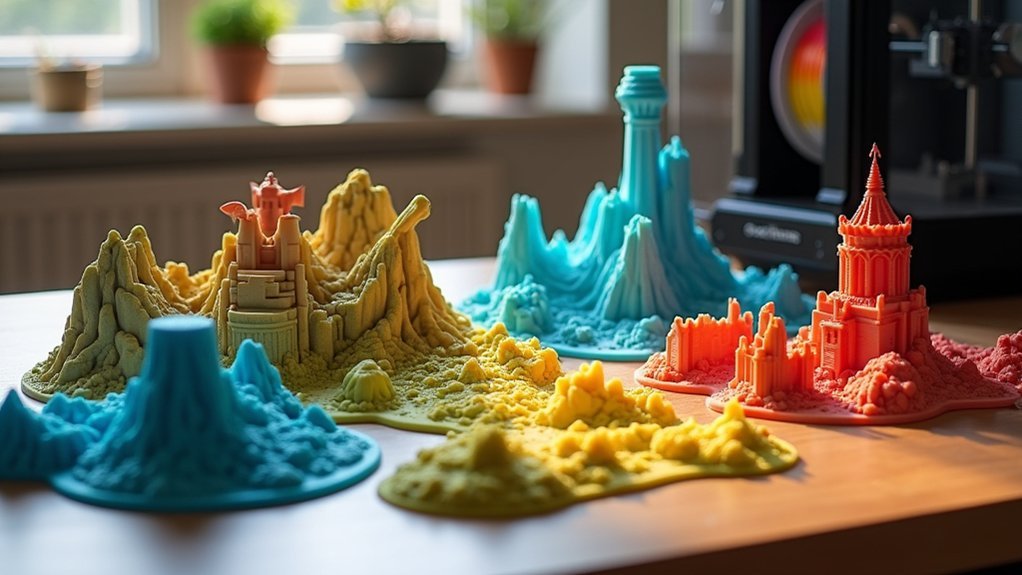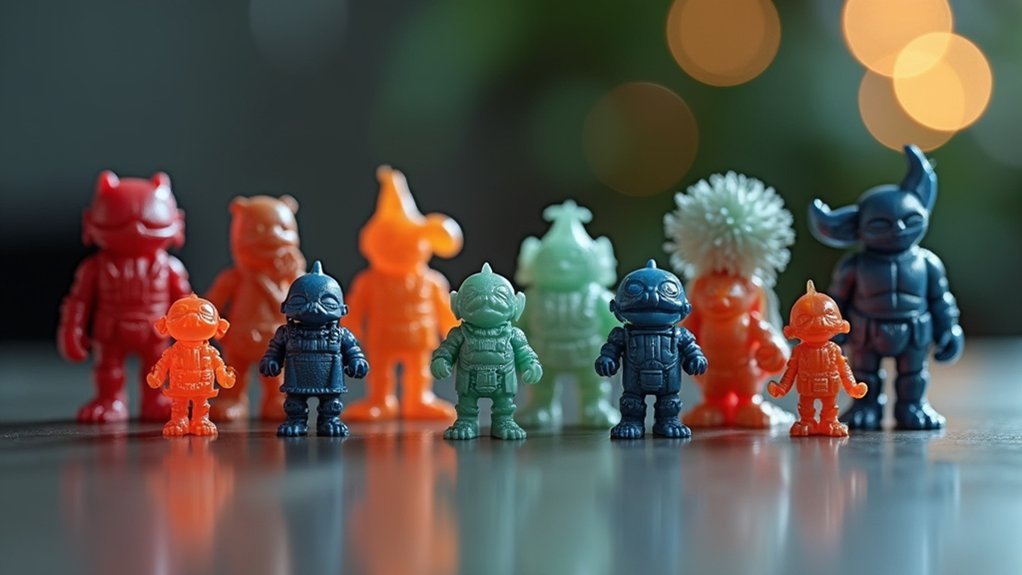You’ve spent hours perfecting your 3D print, only to crack it during removal from the build plate. The wrong tool can instantly destroy what took considerable time and filament to create. While many makers rely on whatever’s handy—credit cards, kitchen knives, or basic scrapers—these makeshift solutions often cause more harm than good. The difference between success and failure lies in choosing removal tools specifically engineered to protect your prints while ensuring clean separation.
Premium 3D Print Removal Tool Kit with Knife and Spatula Set of 2
If you’re tired of damaging your 3D prints or scratching your build plate during removal, the Premium 3D Print Removal Tool Kit with Knife and Spatula Set offers the precision and durability you need. This enhanced kit includes two tools with stiff, hardened stainless steel blades secured by solid rivets, eliminating the spinning blade issues found in repurposed artist spatulas.
The long knife features a beveled front edge that slides gently under prints while protecting your build surface. You’ll appreciate the thick wood handle that provides better control when removing larger parts. The smaller offset spatula includes a black ergonomic rubber grip for comfortable handling during delicate operations.
Beyond print removal, these versatile tools double as leveling instruments to scrape stuck plastic from your print bed.
Best For: 3D printing enthusiasts and professionals who need reliable tools for safely removing prints without damaging their models or build plates.
Pros:
- Durable construction with solid rivets prevents blade spinning issues common in repurposed tools
- Beveled knife edge and ergonomic handles provide precise control for safe print removal
- Versatile design functions as both removal tool and build plate maintenance scraper
Cons:
- Limited to 2-piece set which may not cover all print removal scenarios
- Stainless steel blades could potentially scratch certain delicate build surfaces if used improperly
- No mention of blade replacement options for long-term use
2pcs Stainless Steel 3D Printer Scrapers/Spatulas
The 2pcs Stainless Steel 3D Printer Scrapers/Spatulas deliver versatility that makes them perfect for makers who work with multiple filament types. You’ll get both flat and curved styles in this set, measuring 14x4cm each. The premium stainless steel construction guarantees durability while the reasonable thickness provides effective disassembly without damaging your ABS, PLA, or PETG prints.
You can comfortably grip these scrapers during extended cleaning sessions, and they’re useful beyond 3D printing for smoothing putty or scraping surfaces. While some users mention the handles could be longer for larger items, most praise their effectiveness and build quality, making them excellent gifts for any 3D printing enthusiast.
Best For: 3D printing enthusiasts who need reliable tools for safely removing prints from build plates and cleaning models made from various filament types like ABS, PLA, and PETG.
Pros:
- Durable premium stainless steel construction ensures long-lasting performance
- Includes both flat and curved styles for versatile applications and different print geometries
- Comfortable grip design allows for extended use without hand fatigue
Cons:
- Handle length may be insufficient for working with larger print items
- Limited size at 14x4cm may not be suitable for all project scales
- Only comes in two color options (black and blue) which may not suit all preferences
3D Printer Tools Kit Essential for Remove, Smoothing, Finishing, Deburring
When you’re serious about achieving professional-grade finishes on your 3D prints, an extensive 48-piece toolkit becomes indispensable for removing imperfections and smoothing rough surfaces. This all-encompassing kit includes deburring tools with five extra blades, wire cutters, a hand drill with ten bits, mini needle files, plastic and stainless steel spatulas, tweezers, and a digital caliper.
You’ll handle everything from filament trimming to precision drilling and nozzle clearing. The carbon steel construction delivers durability with sharp blades and comfortable grips. Beyond 3D printing, you can use these tools for DIY projects, model building, and art production. The manufacturer provides free replacements for damaged parts and offers 24/7 customer support.
Best For: 3D printing enthusiasts and professionals who need comprehensive post-processing tools to achieve smooth, professional-grade finishes and handle detailed finishing work across various projects.
Pros:
- Comprehensive 48-piece kit includes all essential tools for complete 3D print post-processing from deburring to precision drilling
- High-quality carbon steel construction with sharp, durable blades designed for extensive use and reliable performance
- Excellent customer support with free replacements for damaged parts and 24/7 assistance available
Cons:
- Large 48-piece kit may be overwhelming for beginners who only need basic finishing tools
- Replacement coverage excludes human damage, limiting protection for user-caused tool damage
- May include specialized tools that casual users won’t frequently need, potentially reducing overall value
3D Printer Tool Kit, 24pcs Nozzle Cleaning & Removal Tools
Extensive tool collections serve 3D printing enthusiasts who need versatile solutions for post-processing challenges. This 24-piece kit delivers thorough coverage with side pliers, putty knife, cleaning needles in five sizes, wire brushes, tweezers, and scrapers. You’ll find the cleaning needles particularly valuable—they’re stored in a round tube and effectively address nozzle clogs across most 3D printer models. The portable design means you can tackle projects anywhere inspiration strikes. Whether you’re handling DIY crafts, model building, or repairs, this kit adapts to diverse needs while keeping everything organized in its convenient zipper storage bag.
Best For: 3D printing enthusiasts and hobbyists who need a comprehensive set of tools for nozzle maintenance, post-processing work, and general model building tasks.
Pros:
- Comprehensive 24-piece kit covers all essential 3D printing maintenance needs including specialized cleaning needles in multiple sizes (0.2mm to 0.4mm)
- Portable design with organized storage in a round tube for needles and zippered bag for the complete kit
- Versatile application beyond 3D printing for DIY crafts, model building, repairs, and art projects
Cons:
- Quality varies across different tools in the kit according to user feedback
- May include some tools that beginners won’t immediately need or use
- Storage bag has limited space for adding additional tools beyond what’s included
2pcs 3D Printer Removals Tool Kit Enhanced Version (Knife and Spatula)
For makers who frequently work with glass print beds, this 2pcs 3D Printer Removals Tool Kit Enhanced Version delivers the precision and durability you need to safely extract prints without damaging your build surface. The stainless steel construction guarantees these tools won’t break under pressure, while the large scraper (205mm) effectively slides under prints for easy removal. The smaller spatula excels at removing supports from detailed prints. Users praise the large tool’s sharpness on glass surfaces, though you’ll want to exercise caution on softer or textured beds. These essential tools provide the reliability and versatility serious 3D printing enthusiasts demand.
Best For: 3D printing enthusiasts who frequently use glass print beds and need reliable, durable tools for safely removing prints and supports without damaging their build surfaces.
Pros:
- Durable stainless steel construction that won’t break under pressure during print removal
- Large scraper (205mm) effectively slides under prints for easy separation from glass beds
- Small spatula excels at precision work like removing supports from detailed prints
Cons:
- Large tool may be too sharp for softer or textured print bed surfaces and could cause damage
- Small tool is thicker than ideal, making it less effective in tight spaces
- Limited versatility as tools are optimized primarily for glass surfaces rather than all bed types
3D Printing Clean-Up Utility Tool Kit (3 Piece Precision Tool Set)
The 3D Printing Clean-Up Utility Tool Kit delivers precision and versatility that makes it ideal for hobbyists and professionals who demand clean, finished models without the frustration of inadequate tools. You’ll get three double-ended utility tools featuring six different blades, scrapers, and picks in one compact set. These tools excel at removing large support sections while also accessing narrow crevices that other tools can’t reach. The precision stainless steel ends provide durability and accuracy, while the long polished wooden handles guarantee comfortable grip during extended use. This kit streamlines your post-processing workflow, making support material removal and model finishing markedly more efficient.
Best For: Hobbyists and professionals who need precise, versatile tools for removing support material and finishing 3D printed models with clean, professional results.
Pros:
- Six different tool ends in one compact kit provide versatility for various support removal tasks
- High-quality stainless steel construction with comfortable wooden handles ensures durability and extended use comfort
- Double-ended design effectively handles both large support sections and narrow, hard-to-reach crevices
Cons:
- Limited to only three tools, which may not cover all specialized cleaning needs for complex prints
- Wooden handles may require more maintenance and care compared to synthetic alternatives
- No protective case or storage solution mentioned for keeping tools organized and safe
Professional 3D Printer Scraper Tool with Comfortable Grip
Professional 3D printing enthusiasts who demand precision and comfort during lengthy part removal sessions will appreciate this upgraded stainless steel scraper tool’s ergonomic design. You’ll get two 6.3-inch scrapers featuring wide blades that efficiently pry models from build plates without damage. The non-slip handle covers provide secure grip control during delicate removal operations. Made from rust-resistant stainless steel, these tools won’t wear down or corrode over time. Each scraper weighs just 67 grams, reducing hand fatigue during extended use. The convenient hanging holes let you store them within easy reach of your workspace, maximizing efficiency.
Best For: Professional 3D printing enthusiasts and hobbyists who need durable, ergonomic tools for safely removing models from build plates during extended printing sessions.
Pros:
- Rust-resistant stainless steel construction ensures long-lasting durability and easy cleaning
- Ergonomic non-slip handle design reduces hand fatigue during extended use at only 67 grams per tool
- Wide blade design with hanging storage holes provides efficient model removal and convenient workspace organization
Cons:
- Limited to 3D printing applications, reducing versatility compared to multi-purpose scrapers
- Two-piece set may be excessive for casual users who only occasionally remove prints
- Stainless steel material may be more expensive than basic plastic alternatives
Professional 3D Printer Tool, Upgraded Metal Removal Spatula
SARDVISA’s upgraded metal removal spatula stands out with its 2.3-inch blade edge, making it an ideal choice if you’re frequently working with large 3D prints that demand efficient stripping capabilities. The stainless steel construction with polished surface provides durability, while the ergonomic non-slip grip guarantees comfortable handling during extended use sessions.
You’ll find this tool particularly effective with TPU and PET-G materials, where many users report it’s a game changer compared to conventional putty knives. The smooth edge radian prevents scratching your models and printer surfaces, though you might need a sharper alternative for stubborn smaller prints that require more precise removal techniques.
Best For: 3D printing enthusiasts who frequently work with large prints and softer materials like TPU and PET-G, and prioritize safety and comfort during extended removal sessions.
Pros:
- Large 2.3-inch blade edge with ergonomic non-slip grip makes handling big prints comfortable and efficient
- Smooth edge design prevents scratching of models and printer surfaces while maintaining durability with stainless steel construction
- Comes with 2-year warranty and 24/7 customer service support from SARDVISA
Cons:
- Less sharp than competing tools, making it struggle with stubborn or smaller prints that require precise removal
- May require additional sharper tools like razor blade scrapers for effective removal of smaller detailed prints
- Build quality prioritizes safety over cutting performance, which can limit versatility for all print types
Bandai Hobby – Tools – Parts Separator Model Kit
Model kit enthusiasts and Gunpla builders will find the Bandai Hobby Parts Separator an invaluable addition to their toolkit. This lightweight tool weighs just 0.634 ounces and features a flat, blade-like end that slides between parts without causing damage. You’ll appreciate the short rod for pushing components out and three holes for gauging part sizes. While primarily designed for model kits, it’s effective for separating tight 3D printed pieces. With 4.4 out of 5 stars from 201 reviews, users praise its ability to disassemble mistakenly assembled parts. Some extremely tight assemblies may require additional thinner tools.
Best For: Model kit enthusiasts and Gunpla builders who need a reliable tool to separate plastic parts without causing damage during assembly or disassembly.
Pros:
- Lightweight design at only 0.634 ounces with multiple functional features including flat blade end, push rod, and size-gauging holes
- Effective at separating tight pieces without damage, making it ideal for correcting assembly mistakes
- High customer satisfaction with 4.4 out of 5 stars from 201 reviews and official Bandai quality backing
Cons:
- May not be effective for extremely tight assemblies that require thinner separator tools
- Limited to plastic model applications and may not work well with other materials
- Relatively small size at 4.8 inches may not provide enough leverage for larger or more stubborn parts
3D Print Removal Tool Kit (3 Piece Set for 3D Printers)
When you’re struggling to remove delicate prints without damaging your models or build plate, the 3D Print Removal Tool Kit offers a thorough solution with its three specialized tools. These thin, durable implements feature high-quality wooden handles with pinned blades for long-lasting performance. You’ll appreciate how effectively they lift various print sizes, from large models to intricate details that standard tools can’t handle properly.
With 4.5 stars from 220 customer reviews, users consistently praise the kit’s effectiveness and build quality. The tools minimize damage risk during removal, though you’ll need to exercise caution due to their sharp edges. At 10.2 ounces, this versatile kit provides reliable performance for your 3D printing projects.
Best For: 3D printing enthusiasts who need specialized tools to safely remove delicate prints from build plates without damaging their models or printer beds.
Pros:
- Three specialized tools provide versatility for handling various print sizes and complexity levels
- High-quality wooden handles with pinned blades offer durability and long-lasting performance
- Strong customer satisfaction with 4.5 stars from 220 reviews and proven effectiveness over standard removal methods
Cons:
- Sharp edges require careful handling to avoid potential injury during use
- At 10.2 ounces, the kit may be heavier than some users expect for removal tools
- Limited to 3-piece set which may not cover all specialized removal scenarios for advanced users
Factors to Consider When Choosing Part Removal Tools That Won’t Damage Prints
When you’re selecting part removal tools, you’ll want to focus on five critical factors that directly impact your print’s safety and your removal success. The blade material quality and edge sharpness level determine how cleanly you can separate parts without causing damage, while handle ergonomics and tool flexibility balance affect your control and precision during removal. Additionally, you must guarantee the tools you choose are compatible with your specific build surface to avoid scratching or damaging your printer bed.
Blade Material Quality
The foundation of any reliable part removal tool lies in its blade material quality, which directly impacts both the tool’s longevity and your print’s safety. You’ll want high-quality stainless steel blades that resist bending and breaking during use. Look for tools with polished surfaces that minimize friction, reducing the risk of scratching your prints or print bed.
Consider blade thickness and flexibility carefully. Thicker blades offer sturdiness for larger prints, while thinner ones provide precision for delicate models. You’ll need tools that slide smoothly under your prints without causing damage.
Choose rust-resistant materials to guarantee your tools maintain performance over time. Quality blade construction prevents degradation that could harm your prints during removal, making this investment worthwhile for protecting your 3D printing projects.
Handle Ergonomics Design
Beyond blade quality, handle ergonomics greatly impact your ability to remove prints safely and efficiently. You’ll want tools with non-slip grips that enhance comfort and control during prolonged use while reducing hand fatigue. The handle’s thickness and shape directly influence leverage, making it easier to lift models without causing damage.
Look for contoured designs that distribute pressure evenly across your hand. This minimizes slipping risk and improves precision during intricate tasks. You’ll maintain a firmer grip while operating safely around delicate prints.
Consider tools incorporating lightweight materials for enhanced maneuverability. These enable better handling of varying print sizes and complexities. Well-designed ergonomic handles ultimately let you work longer with greater accuracy, protecting both your prints and your hands.
Tool Flexibility Balance
Flexibility in your tool blade determines success when removing prints without causing damage. You need a balance between rigidity and flexibility that allows your tool to slide beneath prints without applying excessive force. Too rigid, and you’ll risk cracking delicate models or scratching build surfaces. Too flexible, and you’ll lose the precision needed for clean separation.
Stainless steel tools offer the ideal combination of flexibility and strength. They maintain their shape while providing enough give to follow your print’s contours, minimizing breakage risk. Look for beveled blade edges that create a gentler approach when slipping under models, reducing tearing or lifting. The right flexibility lets you maneuver precisely around complex geometries while handling removal stresses effectively.
Edge Sharpness Level
Precision separates effective removal tools from those that’ll damage your prints or build surface. You’ll need the right edge sharpness level to balance cutting effectiveness with safety. Sharp edges slide under prints efficiently, but they risk scratching your printer bed or gouging delicate details. Smooth-edged tools protect both your models and build platform, though they may struggle with stubborn adhesion.
You’ll want moderate sharpness for most applications – sharp enough to penetrate adhesive bonds without excessive force, yet controlled enough to prevent accidental damage. For larger prints, slightly duller edges provide better structural support during removal. Consider tools with ergonomic handles that enhance your control, reducing the likelihood of slipping and causing unintended scratches or print damage.
Build Surface Compatibility
Your build surface dictates which removal tools will work safely and effectively. Glass beds demand sharper-edged tools that can easily slide beneath prints without requiring excessive force. However, softer surfaces like PEI sheets need rounded or flexible blades to prevent scratching and gouging.
Consider your tool’s thickness and rigidity based on your build surface’s resilience. Thinner tools work better on delicate surfaces, sliding under prints with minimal pressure. Thicker, more rigid tools suit glass and other durable surfaces when removing larger prints.
Match your removal method to both surface type and print material. PLA typically releases easier from glass, while PETG might bond more aggressively to PEI. Choose tools that complement this relationship, ensuring you’re not fighting against your printer’s intended adhesion characteristics.
Tool Size Variety
Three distinct tool sizes form the foundation of any effective removal arsenal. You’ll need large tools for substantial prints that require significant leverage and force. Medium-sized tools handle most standard printing jobs, offering balanced control and reach. Small, precision tools excel at intricate details and delicate areas where finesse matters most.
Different blade thicknesses within each size category enhance your versatility. Thinner blades slide effortlessly under tight-fitting prints without scratching your build surface or damaging model details. Thicker blades provide the strength needed for stubborn adhesion situations.
Varying tool lengths complement size diversity by reaching deeper, constrained areas of your print bed. This prevents awkward angles that could scratch surfaces or break prints during removal.
Durability Construction Features
Quality construction separates professional-grade removal tools from flimsy alternatives that’ll fail when you need them most. You’ll want tools made from high-quality materials like stainless steel, which offers superior durability and wear resistance through countless removal sessions. Look for solid rivets securing blades rather than spinning components found in cheaper tools—this prevents loosening and guarantees longevity.
Thicker construction is essential for spatulas and scrapers, providing the rigidity needed for effective print removal without bending or breaking under pressure. Ergonomically designed handles aren’t just about comfort during extended use; they enhance your control and reduce the risk of accidentally damaging your prints. Finally, choose tools with polished surfaces that are easier to clean and maintain, preserving their effectiveness while preventing print contamination.
Safety Design Elements
When selecting part removal tools, safety features should be your top priority to protect both your prints and print bed from unnecessary damage. Look for tools with rounded edges and smooth blade surfaces that won’t scratch delicate surfaces during removal. Ergonomic handles with non-slip grips provide better control and reduce accident risk while working around your printer.
Choose tools made from durable materials like stainless steel, which offer strength without excessive weight. Flexible blades are essential—they’ll slide under prints easily without requiring excessive force that could break delicate parts or damage your tool. A thorough kit should include various scraper sizes and shapes to accommodate different print geometries, ensuring you can safely remove any model without harming your printer surface.
Frequently Asked Questions
How Do I Prevent Warping When Removing Large Prints From the Bed?
You’ll prevent warping by letting prints cool gradually before removal. Don’t rush the cooling process. Use a heated bed with proper adhesion, then allow temperature to drop slowly to room temperature naturally.
What’s the Safest Removal Technique for Delicate Overhangs and Thin Walls?
You’ll want to use a thin, flexible spatula and work slowly from sturdy corners first. Apply gentle, consistent pressure while supporting delicate areas with your free hand to prevent snapping thin features.
Can I Use Household Items as Alternatives to Professional Removal Tools?
You can use dental floss for cutting supports, tweezers for small parts, and craft knives for precise cuts. However, they’re less effective than professional tools and may damage delicate prints if you’re not careful.
How Long Should I Wait Before Removing Prints From a Heated Bed?
You should wait until your heated bed cools to room temperature before removing prints. This typically takes 10-30 minutes depending on bed size and material, preventing warping and damage.
What’s the Best Way to Remove Failed Prints Without Damaging the Bed?
Let your bed cool completely first. You’ll gently pry failed prints using a plastic scraper at shallow angles. Don’t force removal while heated—you’ll scratch or gouge the surface permanently.





Leave a Reply